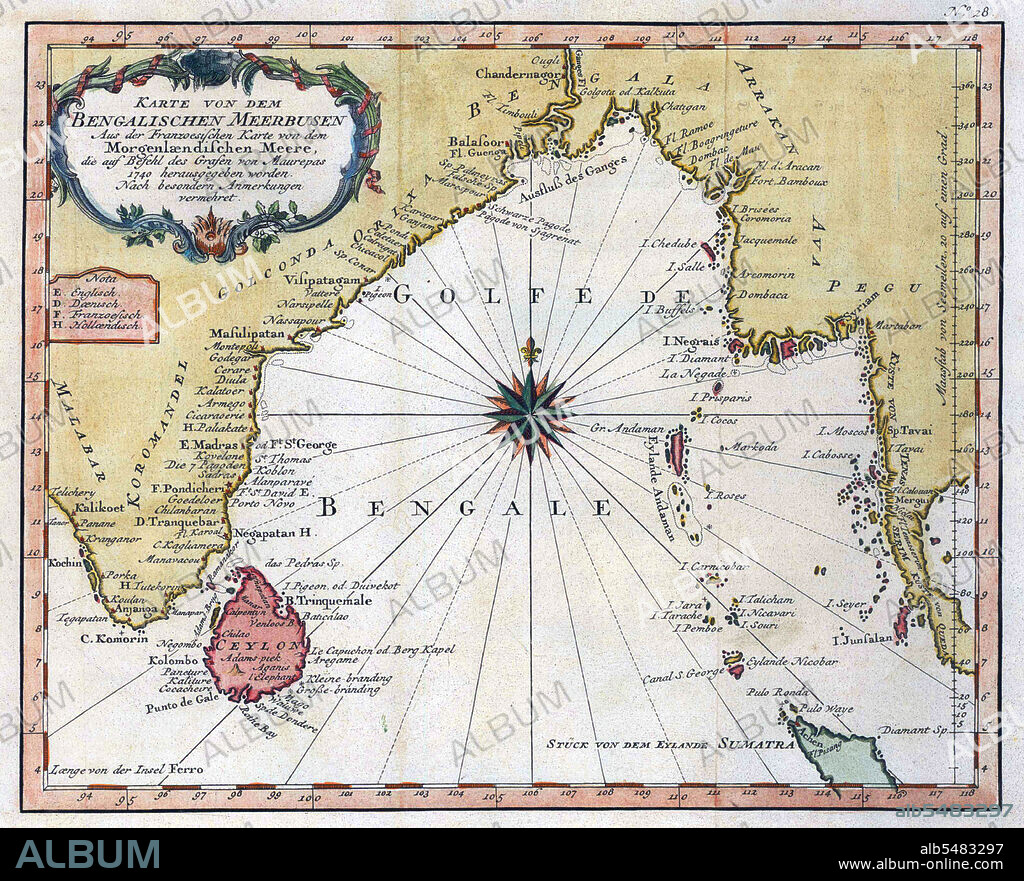alb5483297
Bellin's map of the 'Golfe de Bengal' and its shipping ports, including the Coromandel Coast.

|
Añadir a otro lightbox |
|
Añadir a otro lightbox |



¿Ya tienes cuenta? Iniciar sesión
¿No tienes cuenta? Regístrate
Compra esta imagen

Título:
Bellin's map of the 'Golfe de Bengal' and its shipping ports, including the Coromandel Coast.
Descripción:
Ver traducción automática
The southeastern coastline of India, known as the Coromandel Coast, was home to three Portuguese settlements by late 1530 at Nagapattinam, Sao Tome de Meliapore, and Pulicat. Later, in the 17th and 18th centuries, the Coromandel Coast was the scene of rivalries among European powers for control of the India trade and the 'Spice Trade'. The British established themselves at Fort St George (Madras) and Masulipatnam, the Dutch at Pulicat, Sadras and Covelong, the French at Pondicherry, Karaikal and Nizampatnam, and the Danish in Dansborg at Tharangambadi. Eventually the British won out, although France retained the tiny enclaves of Pondicherry and Karaikal until 1954. Chinese lacquer goods, including boxes, screens, and chests, became known as 'Coromandel' goods in the 18th century, because many Chinese exports were consolidated at the Coromandel ports.
Crédito:
Album / Pictures From History/Universal Images Group
Autorizaciones:
Modelo: No - Propiedad: No
¿Preguntas relacionadas con los derechos?
¿Preguntas relacionadas con los derechos?
Tamaño imagen:
4926 x 3985 px | 56.2 MB
Tamaño impresión:
41.7 x 33.7 cm | 16.4 x 13.3 in (300 dpi)
Palabras clave:
ASIA • ASIATICO • BANGLADESH • COLONIALISMO • COMERCIO • HISTORIA • HISTORICO • INDIA • INDIO • INDONESIA • INDONESIO • MADAGASCAR • MYANMAR • OCEANO INDICO • SRI LANKA • SUMATRA • TAILANDES • TAILANDIA
 Pinterest
Pinterest Twitter
Twitter Facebook
Facebook Copiar enlace
Copiar enlace Email
Email
